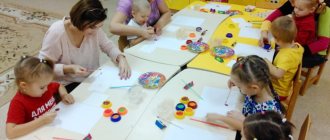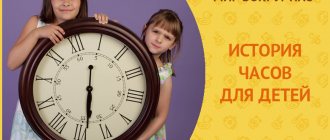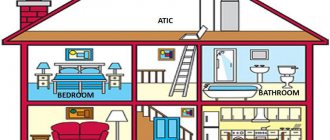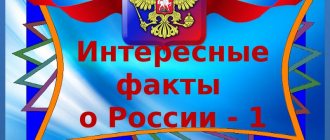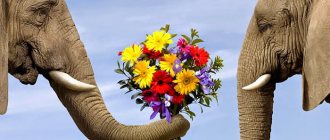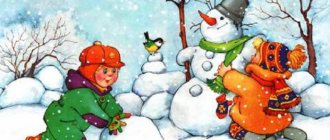Presentation for the lesson on the topic: Presentation “From wood to paper”
Slide 1
State budgetary preschool educational institution kindergarten No. 61 of a combined type, Kolpinsky district, St. Petersburg “FROM WOOD FROM PAPER” Mekhnina Olga Nikolaevna Teacher of the highest qualification category
Slide 2
Goal: To introduce and interest educators in the production and use of paper pulp. Reveal to educators the significance of this work in the cognitive and artistic activities of children. Help develop creative abilities in teachers.
Slide 3
Journey into the world of beauty In the silence of the forest, listen to the sound of the pond and the breeze. It is gentle and very quiet, like the wings of a moth.
Slide 4
Landing "Plant and grow a tree!" A tree is planted soon, but not soon its fruits are eaten.
Slide 5
Plants under our protection
Slide 6
Integration of this topic in educational areas: Cognition Health Artistic creativity Physical education Safety Reading fiction. Socialization of literature Labor Communication Music
Slide 7
Cognitive - speech development Cognition Teacher's story with discussion Why trees need leaves. Can frost kill a tree? Inside a tree. Where do trees live? Conversation Journey into the past of the book. From seed to tree. Creating a collage “From tree to paper” Experiments: The root is the stability of the tree. How tree roots absorb water. The wind disperses trees to new places. Search activity “Find a leaf that fell a long time ago...yesterday...today.” “Count the birch trees around the kindergarten.” “How many coniferous trees grow on the territory of the kindergarten.” Experimenting Paper from napkins; Waste paper; Paper pulp. Fun mathematics Educational games, problem situations based on FEMP. Creation of the album “In the World of Paper” Communication Conversations “The country in which we live. Nature of Russia." "Needs of plants." "Nature and the man-made world." "Books as a gift." A story about the history of the creation of the book. "About caring for nature." Compiling a descriptive story based on I. Shishkin’s painting “Morning in a Pine Forest.” Compilation of stories "If I were a tree." Guessing riddles about trees Writing poems about trees; Literary quiz “Trees in Fairy Tales” Reading fiction “Reading is the window through which children see and learn about the world and themselves.” V.A. Sukhomlinsky Reading V. Zotov “Forest Mosaic” I. Tokmakov “Conversations”. I. Sokolov-Mikitov “Russian Forest” M. Prishvin “Conversation of Trees.” V. Bianchi “Forest Tales”. E. Sinitsina “Clever Tales”, “Apple”, “Pine Cone”. P. Mikhalkov “Christmas tree” Retelling of V. Bianki “Teremok”. Learning by heart “Song of Oak Seedlings.” “Wind and Leaves.” “Birch.”
Slide 8
Social and personal development Safety Reading, conversation, looking at illustrations “When you are in danger”, “How and with what we breathe”. "Rules of conduct in the forest." Socialization S/r game “I am visiting the library”; S/r game “Forester”. D/i “Library”, “Man + nature = amazing things”. “What is paper for?” “Who is the odd one out”, “Loto”. Educational games “Chain”, “You are a part, I am the whole”, “What was, what will be”. Construction and construction game "Building an ecological city." Outdoor games “One, two, three, run to the tree”, “Branch, branch, where is your baby.” “Guess the tree”, “Hurry up to escape.” Work, observation, duty, work assignments Observation of trees; Caring for indoor plants; D/i “Who needs what for work.” Making Attributes for s/r games; Landscape production; Making a “volcano”; Making paper for postcards; Making animal figures from paper dough. Handmade from natural material “Sunflowers”; "A flower for mom."
Slide 9
Artistic and aesthetic development Artistic creativity Examination of reproductions I. Levitan “Golden Autumn”, A. Savrasov “The Rooks Have Arrived”, I. Shishkin “Morning in a Pine Forest”, “Birch and Rowan Trees”. A. Kuindzhi "Birch Grove". Drawing using techniques: leaf printing, spraying, signet imprinting - “Golden Autumn”, “Rowan Branch”. Application “Branch with autumn leaves”; "Maple" using paper pulp; Modeling “Fruits”, “Forest in autumn dress”. Paper design “Heart”, “Flower for Mom”; “Books - babies”; Postcards using paper pulp." Music Listening Tchaikovsky “The Seasons”. F. Liszt “The Sound of the Forest”. We fantasize and improvise “Paper Carnival” (introducing children to rustling sounds, object and musical instruments that produce them). We voice the poems “Talking of Leaves” by V. Berestov (to attract children’s attention to the beauty and richness of the sounds of the surrounding nature). Round dance “There was a birch tree in the field...”. “Wooden stories” (introduction to wooden tools).
Slide 10
Physical development Physical education Morning exercises, movement exercises, physical education classes of a thematic nature “If I were a tree” (according to the exercise of Maura O Conner) Health Got up in the morning, washed, put myself in order - And immediately put my planet in order. Antoine de Saint-Exupéry The Little Prince Conversation: “Help nature!” Working with parents Great importance is given to working with parents. Joint events raise the authority of the family, unite children, parents and us teachers. Once a quarter, the group publishes an environmental newspaper for parents, “Toward Nature with Kindness.” Our parents participated in collecting waste paper. Together with the children we made crafts from natural materials. With the help of their parents, children replenish the collection of words “Find a beautiful word about a tree.” Folders about trees are published every month.
Slide 11
Don't stop being surprised!
nsportal.ru
Preparing a “station” for making paper yourself at home
Before you start making your own paper, you need to set up an assembly line to ensure the process goes smoothly. Arrange all the necessary equipment in stages:
Stage 1. Blender: This is where warm water comes in handy. Stage 2. Basin: it should be filled with warm water about 7-8 cm. Also at this stage you will need a frame, deckle and Velcro tape. Stage 3. Draining the water: the felt, flat spacer and sponges should be right here, right next to the basin. Stage 4. Drying: Lay out several newspapers to dry the paper.
Now you're ready to make paper! Stock up on warm water, 8-10 sheets of scrap paper and start making paper with your own hands with your child.
Presentation - History of paper
Slides and text of this presentation
Slide 1
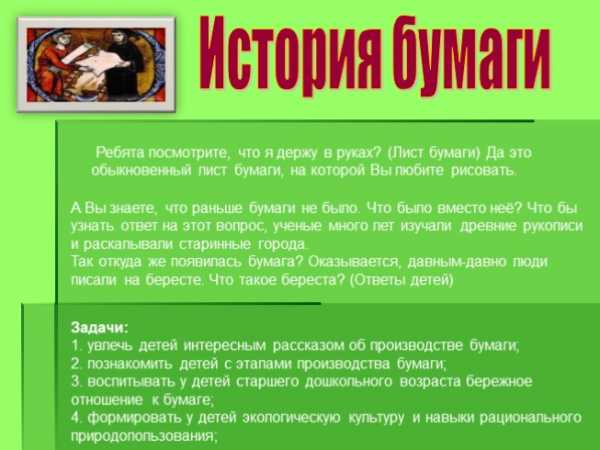
History of paper Guys, look what I'm holding in my hands? (Sheet of paper) Yes, this is an ordinary sheet of paper on which you like to draw. Objectives: 1. captivate children with an interesting story about paper production; 2. introduce children to the stages of paper production; 3. instill in children of senior preschool age a careful attitude towards paper; 4. to develop children’s environmental culture and skills in rational environmental management; Do you know that before there was no paper? What happened instead? To find out the answer to this question, scientists studied ancient manuscripts and excavated ancient cities for many years. So where did paper come from? It turns out that a long time ago people wrote on birch bark. What is birch bark? (Children's answers)
Slide 2
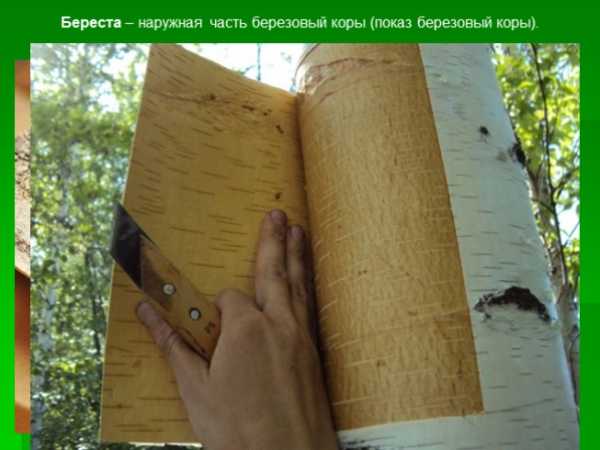
Birch bark is the outer part of birch bark (showing birch bark).
Slide 3
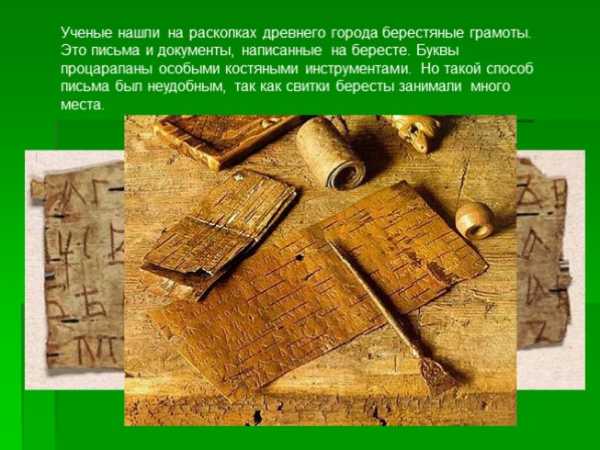
Scientists found birch bark letters during excavations of the ancient city. These are letters and documents written on birch bark. The letters are scratched with special bone tools. But this method of writing was inconvenient, since the birch bark scrolls took up a lot of space.
Slide 4

In the southern countries, clay tablets on which they wrote were replaced by papyrus, a writing material made from a plant of the same name. But they took up a lot of space.
Slide 5
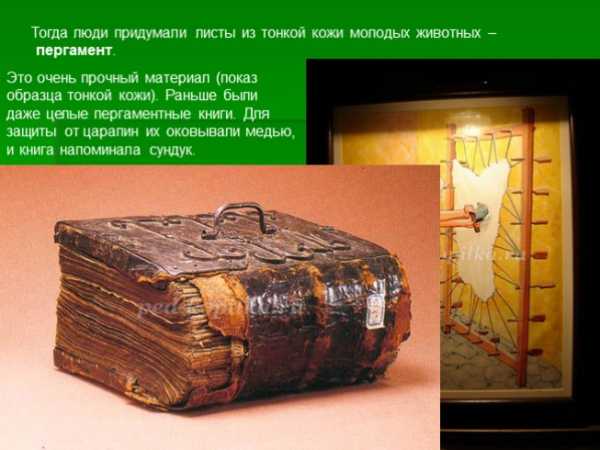
Then people came up with sheets of thin skin of young animals - parchment. It is a very durable material (sample showing thin leather). Previously, there were even entire parchment books. To protect them from scratches, they were bound with copper, and the book resembled a chest.
Slide 6
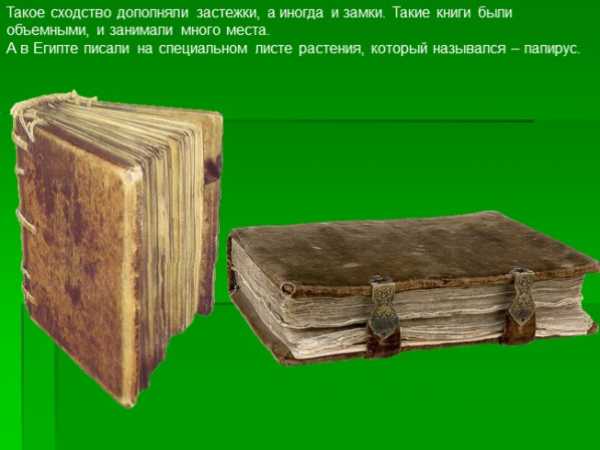
This similarity was complemented by clasps and sometimes locks. Such books were voluminous and took up a lot of space. And in Egypt they wrote on a special leaf of a plant called papyrus.
Slide 7

But time passed, and a new material appeared that was much thinner than parchment. In ancient China, they came up with a recipe for making paper. It was easy and convenient to write on. This material was admired by all countries as a curiosity, but the wonderful method of making it was kept strictly secret. Many years passed and residents of other countries learned how to make this miracle. What do you think paper is made from? (Children's answers) If children find it difficult to answer, let's turn to the riddle.
Slide 8
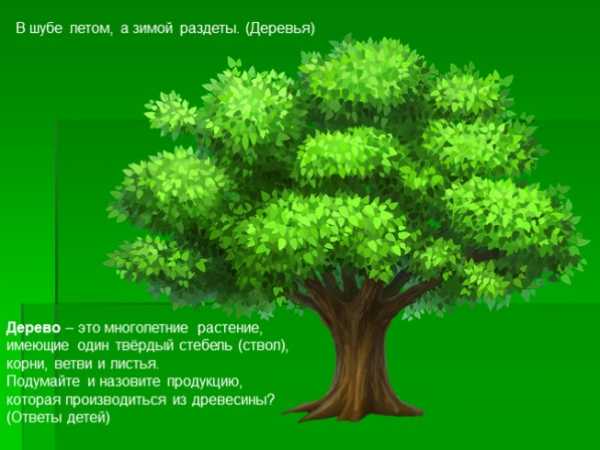
In a fur coat in the summer, and undressed in the winter. (Trees) A tree is a perennial plant that has one hard stem (trunk), roots, branches and leaves. Think and name the products that are made from wood? (Children's answers)
Slide 9
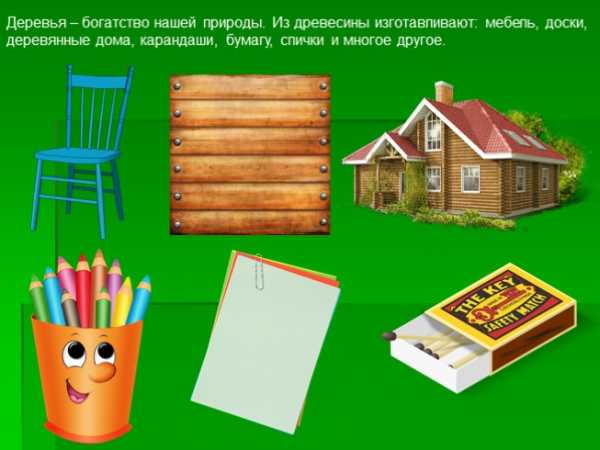
Trees are the wealth of our nature. Wood is used to make: furniture, boards, wooden houses, pencils, paper, matches and much more.
Slide 10

In order to learn how paper is made from wood, you need to go to a paper factory. It is there that logs cut from the forest are brought.
Slide 11
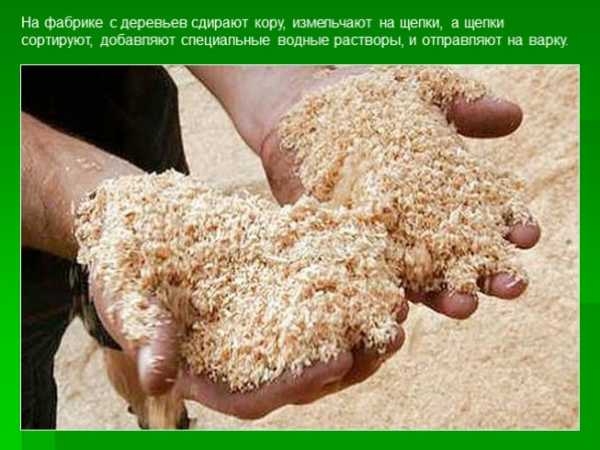
At the factory, the bark is stripped from the trees, crushed into chips, and the chips are sorted, special aqueous solutions are added, and sent for cooking.
Slide 12

There are two types of wood processing: 1. Mechanical method The paper turns out to be fragile and is used for the production of newspaper. 2. Chemical method Paper pulp is obtained from wood, which goes into a paper-making machine, in which there are many, many rollers. Some rollers are wrung out, others are dried, and others are polished. This way, moving from roller to roller, our wood turns into high-quality white paper.
Slide 13

Tell me guys, why do people need paper? (Children's answers) Many objects around us are made of paper. Look and name these items. (Children's answers) 1. School supplies: books, textbooks, notebooks, notepads, sketchbooks, colored paper; 2. Products for the apartment: newspapers, magazines, wallpaper, napkins, toilet paper; 3. Packaging products: boxes, containers, wrapping paper, etc. All this requires a lot of paper. At the same time, forest areas are rapidly shrinking. In order not to cut down forests, people came up with the idea of handing over waste paper and making paper from it. Waste paper is paper products used in everyday life (old newspaper, notebooks, magazines, boxes, etc.) This is how paper gets a second life and is called recyclables.
Slide 14
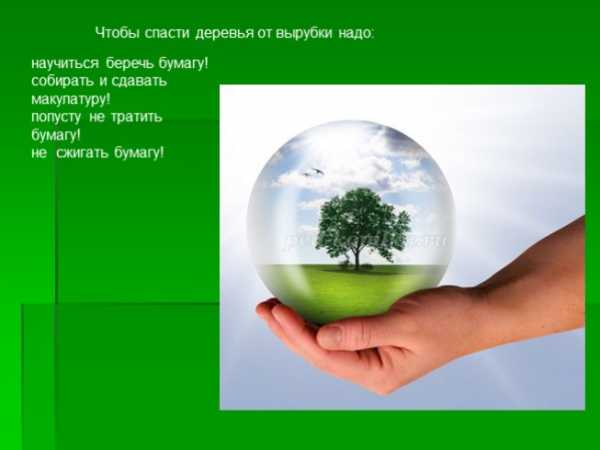
Learn to save paper! collect and hand over waste paper! Don't waste paper! do not burn paper! To save trees from cutting down you need to:
How to make a frame and deckle for DIY paper crafting
What is this deckle? This is a paper form, a special format frame. The hole in the deckle will determine what size the finished piece of paper will be. Imagine cupcakes that spread without a tin. The same will happen with paper. For the master class, the “you will need” item listed two ordinary wooden frames. Buy ones that don't have a layer of laminated paper on them, otherwise it will start peeling off the frame once submerged in water.
To make a paper craft frame, follow these steps:
- Remove the packaging and cardboard backing from the frame. Cut a piece of fiberglass about 1/2 inch smaller than the edge-to-edge size of the frame.
- Using a staple gun or staple gun, attach the fiberglass to the frame. Make sure it fits snugly. Try to nail so that the fiber does not sag in the middle.
- Secure the frame joints by driving a nail into each edge. Inexpensive frames are often glued only at the joints and fall apart after repeated exposure to water.
A deckle is the same frame, only without a backing.
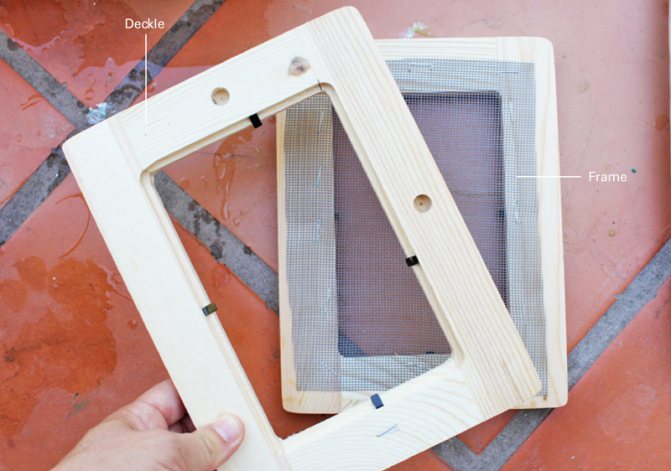
How are books made?
So, after the author writes the text and the editor of the publishing house approves it, the proofreading process
. The work is checked for errors. Ideally, the proofreading team reads the text several times. After this, illustrations are selected for the book.
Then the layout
. Using a special computer program, the layout designer selects the book format, margin size, types and sizes of fonts, and determines the location of illustrations and text.
The next stage is called color separation
. Did you know that to print a fashion magazine cover you only need four colors: blue, pink, yellow and black? Therefore, now the designer must divide all illustrations into four components.
The most important stage is printing the book.
. Using rollers on a printing machine, the ink is rolled out to a thin layer, fed onto a printing plate, which rotates and applies the image to a continuous roll of paper.
Interesting!
Printing house workers can print several thousand sheets in one shift.
It is difficult to imagine any book without a cover. Therefore, the next stage is creating the “face” of the future book. If the cover is ready, it is placed on the book block and trimmed. If a hard cover is being made, the book is trimmed before the cover is glued on.
That's all - the book is ready to delight the eyes of admiring buyers, all that remains is to pack it. You can see with your own eyes how books are made in the next video.
How to make DIY paper with confetti at home
Instead of using white paper, reach for multi-colored paper scraps, like old Christmas lights and confetti from a kid's birthday party. After mixing most of the paper into the mass, add a few extra colored scraps and spin in the blender a couple more times to get larger pieces of colored paper into the product. A great way to recycle paper yourself.
